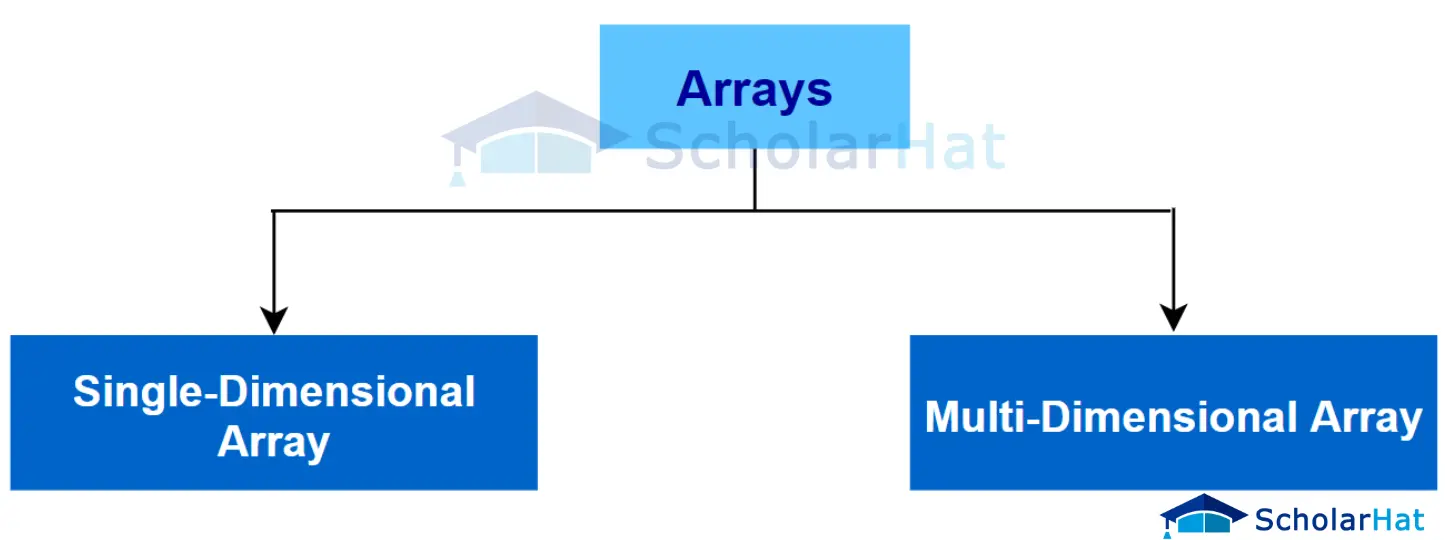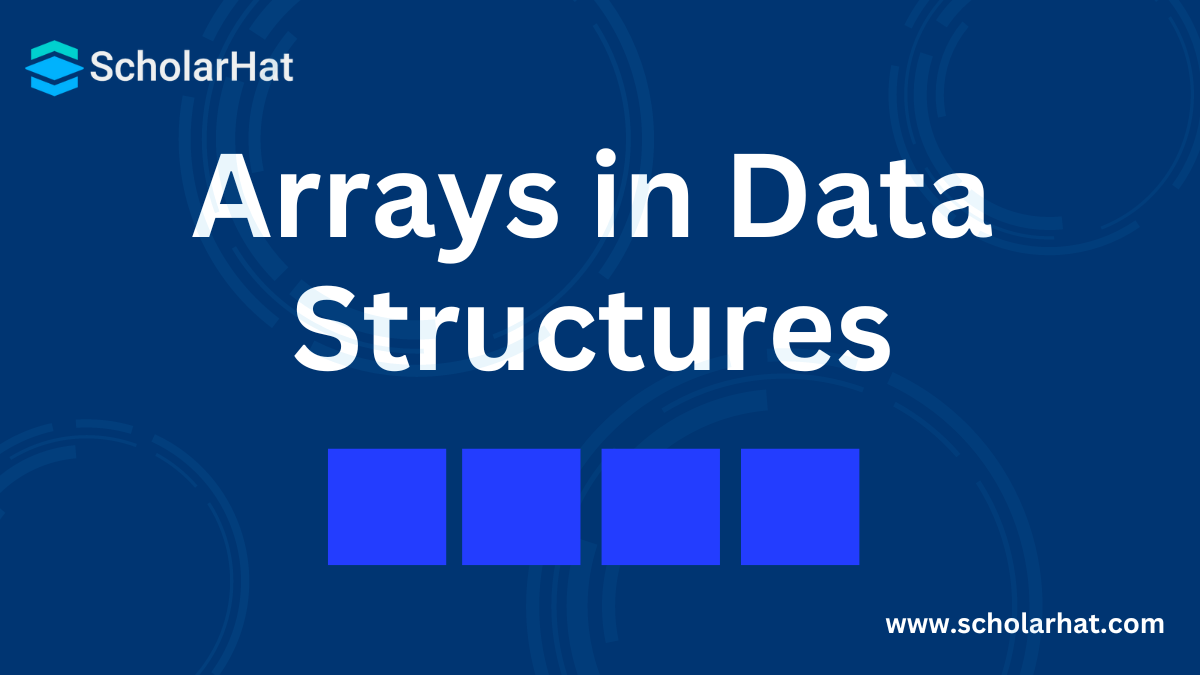dataType arrayName[arraySize];
Types of Arrays in Data Structures

- Single-dimensional array: It is a collection of elements of the same data type that are stored in a contiguous block of memory.
- Multi-dimensional array: It is an array that contains one or more arrays as its elements. We will see this in the next section Types of Arrays in Data Structures.
In this tutorial, we will cover all the aspects of a Single dimensional array
How to Access Elements of an Array in Data Structures?
To access the array elements, use the index number of the required element. The array index starts with 0 . The index of the last element is n-1 .
ArrayExample: __init__( self.a = [ self.b = [ self.c = [display_elements( array_example = ArrayExample() array_example.display_elements()
ArrayExample < main < System.out.println(a[ System.out.println(c[ >
< std::cout std::cout Run Code >>
Output
Read More - Best Data Structure Interview Questions and Answers
Basic Operations on Arrays in Data Structures
This operation is used to traverse or move through the elements of the array.fruits = [
ArrayExample < main < String[] fruits = > >
Output
Apple Mango Banana Orange Grapes
We can insert one or multiple elements in an array as per the requirement at the required positions or indexes.
main(): chairs = [ n = pos = item = n = n + j = n - = pos: balls[j + balls[pos] = item ) , i +
BallInsertion < main < n = n + = pos) < balls[j + balls[pos] = item; System.out.println(); + (i + + balls[i]); > > >
< n = n + = pos) < balls[j + balls[pos] = item; std::cout ;
Output
It is used to delete an element from a particular index in an array. balls = [ n = pos = j = pos n = n - ) + +
Main < main < n = n - ); + (i + + balls[i]); > > >
< n = n - ;
Output
The chairs and the corresponding number of balls after removing a ball
It is used to search an element using the given index or by the value. We can search any element in an array and display both, its index and value.
balls = [ n = order = , order, ", j +
Main < main < System.out.println( + order + " + (j + >
< std::cout "
Output
The corresponding chair number of order: no_of_students = [ n = pos = item = ) ) )
BenchUpdate < main < ); System.out.println(); + (i + + noOfStudents[i]); > noOfStudents[pos] = item; System.out.println(); + (i + + noOfStudents[i]); > > >
; noOfStudents[pos] = item; std::cout ;
Output
The number of students sitting on the benches in order:
Complexity Analysis of Operations on Arrays
- Time Complexity
Applications of Arrays in Data Structures
- Storing and accessing data: Arrays are often used to store data that can be accessed quickly and efficiently. For example, an array can be used to store the scores of students in a class or the prices of products in a store.
- Sorting and searching data: It is easier to sort and search data in an array using the index. It is used for different sorting algorithms such as bubble sort, insertion sort, merge sort, and quick sort.
- Implementing dynamic data structures: It is used to implement dynamic data structures like stacks , queues , and heaps .
- Image processing: Arrays can be used to represent and process images. Each element in the array represents a pixel in the image, and operations can be performed on the array to manipulate the image.
- Numerical computations: The application of an array is extensive in numerical computations, such as in linear algebra and signal processing. For example, a matrix can be represented as a two-dimensional array, and operations like matrix multiplication can be performed efficiently using arrays.
- Games and simulations: Arrays can be used to represent game boards, game pieces, and game states. They are also used in simulations to store and manipulate data over time.
Advantages of Arrays in Data Structures
- Efficient access : Arrays offer fast and efficient access to elements because each element can be accessed directly through its index. This makes array traversal quick and straightforward.
- Versatility: Arrays can be used to store any type of data like integers, characters, and strings. They can also be used to store user-defined data types, such as structures and classes.
- Flexibility: Arrays are used to implement other data structures like stacks, queues, trees, graphs, etc.
- Easy to remember: Arrays represent multiple data items of the same type using a single name. Therefore it’s easier to remember an array name than remembering the names of several variables.
Disadvantages of Arrays in Data Structures
- Fixed-size: The size of an array is fixed at the time of its creation, which means that once the array is created, its size cannot be changed. This can be a limitation in situations where the size of the data is not known in advance.
- Memory wastage: There will be a wastage of memory if we store less number of elements than the declared size because there is static memory allocation in arrays.
- Inefficient insertion and deletion: Arrays store data in contiguous memory locations, which makes deletion and insertion very difficult to implement. All the elements after insertion or deletion must be shifted to accommodate the new element or fill in the gap. This can be a time-consuming process, especially for large arrays.
- Homogeneous data: Arrays can only store elements of the same data type, which can be a limitation in situations where the user needs to store data of different types.
- No built-in support for dynamic resizing: While some programming languages provide built-in support for dynamic resizing of arrays, many do not. In those cases, the developer may have to implement their own resizing logic, which can be complex and error-prone.
Summary
So, here we saw every aspect of arrays in data structures. As you are already familiar with arrays, it might not have become difficult to understand the above-discussed concepts. You might have got a broad idea regarding arrays and their applications. I know it's quite difficult to understand the implementation of array operations in a single go. Therefore, refer to it again and again till you get thorough with the arrays in data structures. To test your knowledge of arrays, enroll in our Best Dsa Course.
FAQs
Q1. What are two types of array in Data Structures?
- Single-dimensional array
- Multi-dimensional array
